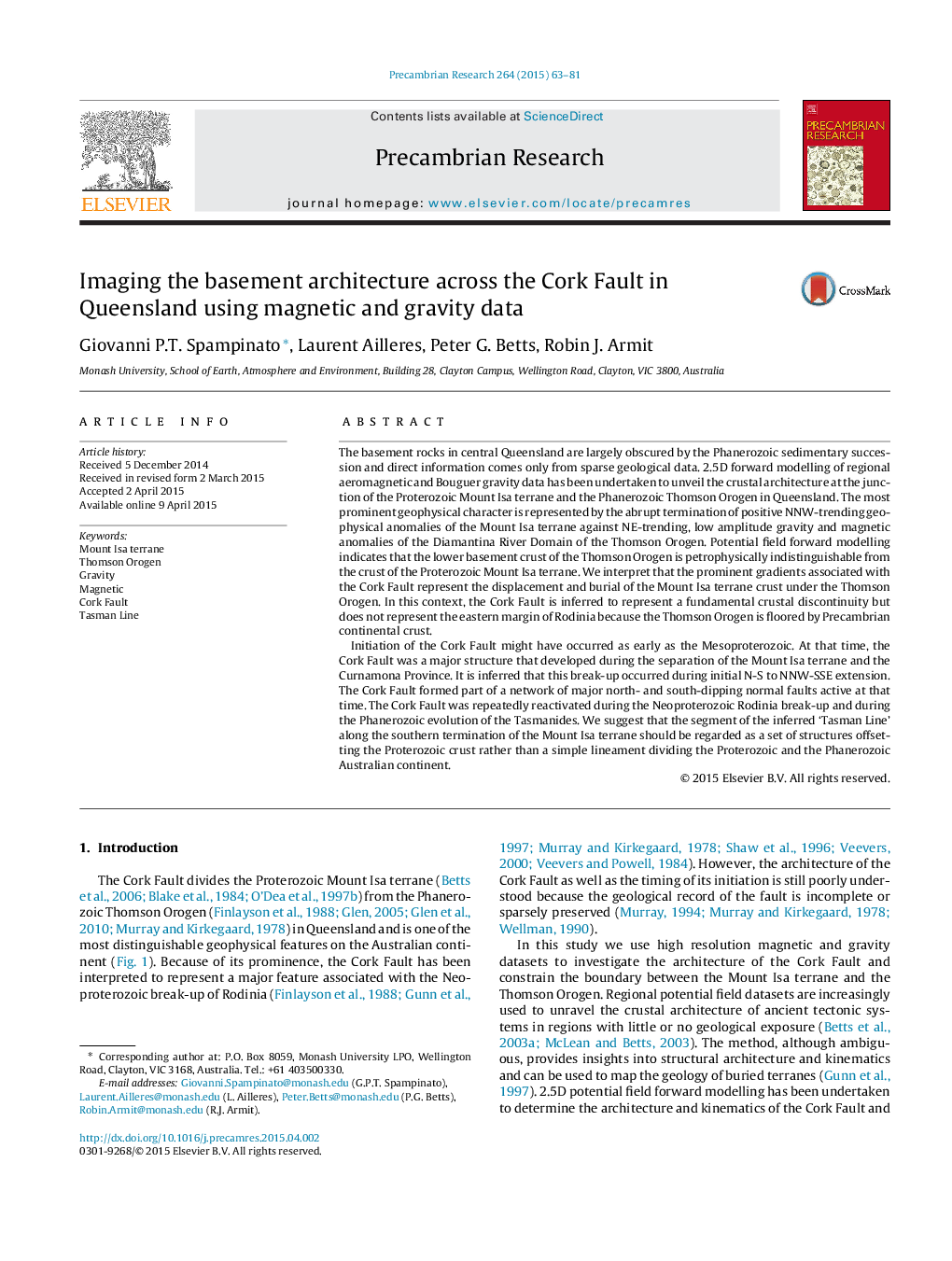| کد مقاله | کد نشریه | سال انتشار | مقاله انگلیسی | نسخه تمام متن |
|---|---|---|---|---|
| 4722676 | 1639611 | 2015 | 19 صفحه PDF | دانلود رایگان |
• The Cork Fault juxtaposes the Mount Isa terrane and the Thomson Orogen.
• The deep crusts of the two provinces are petrophysically indistinguishable.
• The lower crust of the Thomson Orogen consists of thinned Precambrian crust.
• The Cork Fault does not represent the eastern margin of Rodinia.
• The Cork Fault was a post-1500 Ma S-dipping normal fault during N-S extension.
The basement rocks in central Queensland are largely obscured by the Phanerozoic sedimentary succession and direct information comes only from sparse geological data. 2.5D forward modelling of regional aeromagnetic and Bouguer gravity data has been undertaken to unveil the crustal architecture at the junction of the Proterozoic Mount Isa terrane and the Phanerozoic Thomson Orogen in Queensland. The most prominent geophysical character is represented by the abrupt termination of positive NNW-trending geophysical anomalies of the Mount Isa terrane against NE-trending, low amplitude gravity and magnetic anomalies of the Diamantina River Domain of the Thomson Orogen. Potential field forward modelling indicates that the lower basement crust of the Thomson Orogen is petrophysically indistinguishable from the crust of the Proterozoic Mount Isa terrane. We interpret that the prominent gradients associated with the Cork Fault represent the displacement and burial of the Mount Isa terrane crust under the Thomson Orogen. In this context, the Cork Fault is inferred to represent a fundamental crustal discontinuity but does not represent the eastern margin of Rodinia because the Thomson Orogen is floored by Precambrian continental crust.Initiation of the Cork Fault might have occurred as early as the Mesoproterozoic. At that time, the Cork Fault was a major structure that developed during the separation of the Mount Isa terrane and the Curnamona Province. It is inferred that this break-up occurred during initial N-S to NNW-SSE extension. The Cork Fault formed part of a network of major north- and south-dipping normal faults active at that time. The Cork Fault was repeatedly reactivated during the Neoproterozoic Rodinia break-up and during the Phanerozoic evolution of the Tasmanides. We suggest that the segment of the inferred ‘Tasman Line’ along the southern termination of the Mount Isa terrane should be regarded as a set of structures offsetting the Proterozoic crust rather than a simple lineament dividing the Proterozoic and the Phanerozoic Australian continent.
Journal: Precambrian Research - Volume 264, July 2015, Pages 63–81
